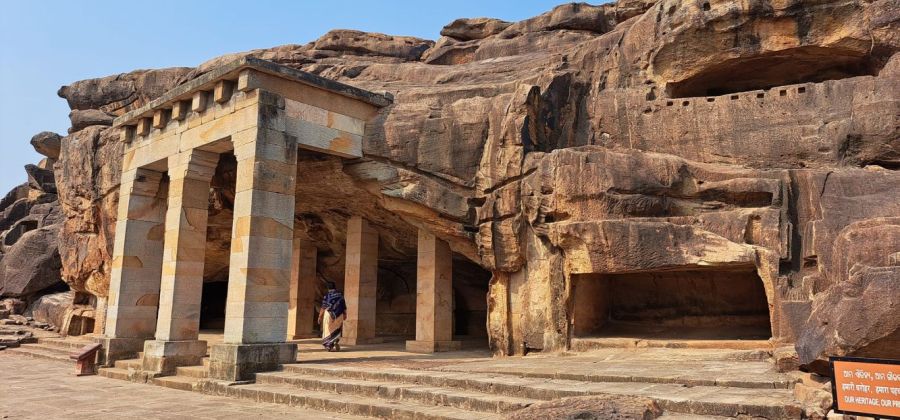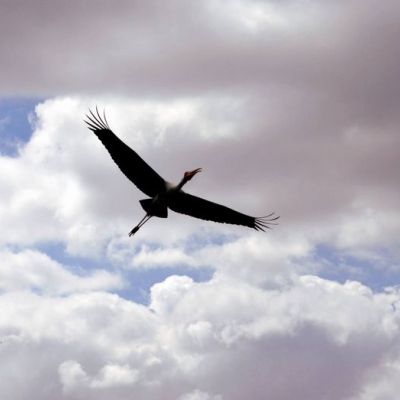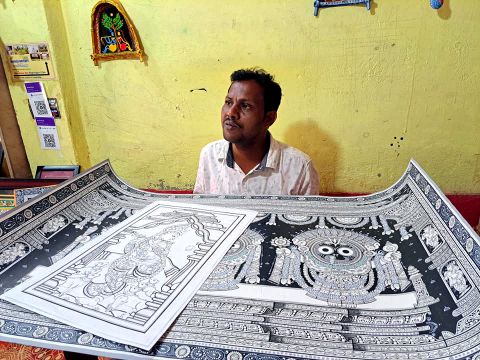Odisha Odyssey: Unveiling Art, Heritage, and Coastal Charms
Puri holds a unique travel destination for Bengalis. It's a vacation home where Bengalis from all economic classes and age groups can fulfill their urge to travel and enjoy the mesmerizing view of where the sea meets the sky, seemingly infinite.
Explored Odisha's cultural tapestry and coastal wonders, a journey beyond compare.
Puri holds a unique travel destination for Bengalis. It's a vacation home where Bengalis from all economic classes and age groups can fulfill their urge to travel and enjoy the mesmerizing view of where the sea meets the sky, seemingly infinite. The first day in Puri for Bengalis typically revolves around Jagannath darshan and partaking in prasad, while the subsequent days are dedicated to bathing at one of the best beaches along the Bay of Bengal and enjoying various types of fish. Despite the lack of novelty in the travel plan, Bengalis eagerly anticipate the trip every time with excitement. Our trip was planned to test our ability to manage and enjoy traveling with our nuclear family, including our small child, so we chose Puri for its laid-back travel plan to avoid any undesirable circumstances.
As a travel-addicted person, I always happily agree to any trip. However, this time, both my son and I had viral fever during the week the trip was planned. Taking Calpol 650 for myself and Crocin for my child, we began our journey from Bangalore. My parents dropped my child and me at the gate of the Bhubaneswar flight as it arrived, as they were also going to Mumbai. My husband picked us up from Bhubaneswar airport since he had traveled to Bhubaneswar two days prior for professional reasons. We arrived at Bhubaneswar around 7 p.m. and hired a car for Puri from the airport at a fixed price of 1400/-. It was almost a 2-hour journey. We stopped for a cup of tea served in a clay cup. Though it is a different state from where I belong, it felt like coming back home.
We booked a hotel with a sea view room located near the lighthouse. Upon entering the room, I was spellbound by the night view of the sea from such close proximity. I had never stayed in a place where the sea was within such touching distance. I wanted to enjoy a cup of tea with the view of the white line where the waves hit the shore and the gushing sound of the waves, but it was late. So, we ordered food and had dinner. After dinner, we spent some time on the balcony, feeling the cold breeze blowing. I had a feverish feeling and was tired, so I decided to end the day and wake up early for a morning walk on the beach.
The next morning, we went for a walk on the beach before breakfast. As I had a bad cold and cough, I was afraid of getting my feet wet in the sea. That day on the beach, I realized that enjoyment does not depend on age; it comes from within. I saw two or three friends over 70 years old taking a bath in the cold morning sea water. A group of elderly ladies asked me to take their photo as they stood in the water holding each other's hands. Some couples were walking on the beach, and the husband had to take his wife's photo to meet her demand. Some small kids were jumping in the water. Suddenly, we had an urge to return for breakfast as we were hungry.
It was a good complimentary breakfast spread at the hotel. My husband and I had our breakfast, but my son didn't. He generally doesn't eat anything outside his normal diet. As I hadn't given him oats or rice, he didn't eat anything until 12 o'clock. I arranged a car from the hotel to visit Konark in the afternoon. After we finished our lunch, we began our journey towards Konark. The car rental cost was 2100/-. It covered two places: the Konark Sun Temple and the River mouth of Chandrabhaga and the Bay of Bengal.
The Konark Sun Temple, an architectural marvel dedicated to the Sun, worshiped as a god in Hinduism, was our first stop. The car dropped us at the junction of two roads around 300 meters from the Konark Sun temple entrance. We started moving towards the entrance through a market of temporary stalls, mostly selling Odisha handicrafts and Konark chakras, souvenirs bought by tourists visiting this heritage site. We hired a government-authorized guide at the entrance. The entry fee was 40/- per person. The temple is open from 6 a.m. to 8 p.m. There is an hour-long light and sound show at Konark Sun temple which starts from 7 p.m. If you want to experience the light and sound at this UNESCO World Heritage site, you can buy tickets either online or at the venue at a price of 30/- per person.
The 13th-century Kalinga architecture of the Konark Sun temple represents the chariot of the Sun with twelve sets of intricately carved wheels pulled by six horses. These twelve wheels signify the twelve months of the year, and the eight spokes in the wheel signify the eight 'prahars,' or 3-hour periods, of a day. The wheels are designed in such a way that the time of day can be determined by observing the shadow made by the sun on the spokes of the wheel. There are sculptures of two lions crushing two elephants on either side of the entrance to the main temple, with a human being underneath each elephant. The overall illustration signifies that the major drawback of the human mind that destroys beings is the desire for wealth, represented by the lion, and power, represented by the elephant. The architecture of the temple, from the staircase at the entrance to the main assembly hall, depicts intricate details of the four major objectives of human life: Dharma, Artha, Kama, Moksha.
Most of the structures of the temple are now in ruins. Archaeological teams during the British period partially restored the structures of the temple that we can see now. Restoration work of the assembly hall is ongoing, and we heard that it would be open for visitors very soon.
It is believed that the temple was originally built on the bank of the Chandrabhaga river, which has now receded. The river is around 3 kms away from the temple where it meets the Bay of Bengal.
After the 1-hour guided tour and capturing the incredible historical marvel on our camera, we moved towards our next destination, Chandrabhaga beach, during sunset. Chandrabhaga river is separated from the Bay of Bengal by a narrow strip of land that can be seen from the shore. A story of the mythological river Chandrabhaga is believed by devotees. The story says that the Sun God was attracted to the daughter of a sage named Chandrabhaga. The Sun came down to earth to marry Chandrabhaga, but she refused. At last, she jumped into the river while being chased by the Sun. So, devotees bathe in the river to show gratitude to Chandrabhaga.
Chandrabhaga is one of the cleanest and less crowded beaches near Puri. Water sports enthusiasts will definitely enjoy the beach, as activities like speed boat rides, banana boat rides, parasailing, snorkeling, and jet skiing are available. We witnessed a wonderful moment while all the boats were returning after sunset, and my son was building something with sand in the chilly breeze. After spending some remarkable time at the beach, we headed back to Puri.
I wanted to have a cup of tea on the way back to Puri. But as my husband is lactose intolerant and we hardly find tea without milk outside, I didn't want to stop for myself only. Finally, both of us enjoyed tea together on our hotel balcony, enjoying the night view of the sea.
We wanted to try a sweet water fish called 'Koi' for dinner. But we were hesitant to order as the preparation served was a bit spicy. So, we asked the kitchen manager if it was possible to make the fish curry less spicy. They immediately agreed and served a very tasty fish curry with cauliflower. They even prepared all the food separately for my kid from the first day. The service was really appreciable.
The third day was for enjoying the sea until the afternoon and shopping in the evening. Unlike the previous day, I prepared breakfast for my kid early in the morning and fed him before we went for our complimentary breakfast at the hotel.
We went to the beach after breakfast. My husband started bathing in the sea, but I couldn't take the risk of bathing due to having a fever just two days prior. I sat on the beach with my kid, and he played in the sand. Suddenly, I saw a person selling sweets on the beach. I asked my husband to come back to the sitting area for a while to enjoy the delicious Odisha sweets on the beach. Despite not having a sweet tooth, I enjoyed the sweets immensely. This indicates how delicious the sweets were.
My son and I also went into the sea to get our feet wet. We went a little far from the shore and got wet from a sudden big wave hitting the shore. After spending 10-15 minutes, we returned to the hotel. We had lunch and rested in the afternoon.
We went shopping in the evening. We visited the Tantuja shop, established by the government of West Bengal in different states of India to develop the handloom sector. We bought items for our grandparents, parents, in-laws, cousins, aunts, and also for us and our kid. I preferred to buy Katki cloths produced in Odisha. Katki sarees are worn by women of Odisha at weddings and other special occasions.
We then went to buy Puri special Khaja from the famous sweet shop named Kakatua, a bird that can speak. We also bought our most favourite Odisha sweet, 'Chhenapora'. We then hurriedly returned to the hotel as we had to pack up everything that night. The next day was the day of departure from Puri.
On our request to the hotel restaurant, they prepared lunch for my kid. My husband had breakfast of dal puri with chana dal and a sweet called 'Lengcha' from Kakatua's special breakfast menu. I only had breakfast at the hotel.
Our flight from Bhubaneswar airport was in the evening. So, we planned to visit three places on that day. One place was Udaygiri caves, 2nd-century BC caves of historical importance, and the two Odisha heritage artisan villages, Raghurajpur and Pipili. All are on the way to Bhubaneswar.
We first went to Raghurajpur, India's first artist village. This village is famous for its unique Pattachitra art, painting on a piece of cloth with natural dyes or on dried palm leaves. It is a form of painting that narrates mythological stories with intricate details and vibrant colors. The patas, decoration under the throne of Lord Jagannath and on the three chariots during the Rath Yatra festival, are made only in this small but creative village. Once you talk to the artists, you'll feel their enthusiasm and passion about their art take dominance over their hard work they put into each painting.
We started entering this small but beautiful and clean village. It has two lanes with a temple between these lanes at the entrance of the village. Artisans' houses are located on both sides of the road. We saw the house of Guru Kelucharan Mahapatra, an exponent of classical Odissi dance, and Dr. Jagannath Mahapatra, an eminent Pattachitra artist whose contribution to the development of Pattachitra art is invaluable. Raghurajpur is the birthplace of both of them. A representative from the community takes visitors to his house and shows their heritage paintings. They explain how the Pattachitra is made. Their women also contribute to their artwork. You can buy from them if you want, but they will not force you to buy. They only want to show their traditional art to the world.
Raghurajpur and Pipili, famous for their applique work, are the famous art exporter villages of Odisha. Pipili is 30 km away from Raghurajpur. We then headed towards Pipili. Pipili is a small town famous for its colorful fabrics and applique work known as 'Chandua'. Pipili was established as an artisan's village in the 10th century AD. The chariots of Lord Jagannath and his siblings during the annual Ratha Yatra festival are ornamented by the artisans of Pipili.
There are a few shops in the town selling their heritage art. If you want to see or buy their work, you have to go to these shops. They had a huge collection of their art. It is really good to hear that their women are also engaged in these creative activities.
We started for Udaygiri caves before reaching Bhubaneswar. Udaygiri and Khandagiri caves are on the way, 7 km from Bhubaneswar. These caves were built in the Kumari mountain range for Jain monks. Udaygiri and Khandagiri are the two adjacent hills where Jain monks were offered by the Jain king to stay and meditate. Udaygiri has 18 caves and 15 caves are in Khandagiri hills. Famous caves in Udaygiri are Rani Gumpha, Hathi Gumpha, and Ganesha Gumpha. Rani Gumpha is a double-storied cave, which is nothing but a monastery. It has some beautiful sculptures like women playing musical instruments, wild animals, human figures, fruit trees, etc. In Hathi Gumpha, there are 17 line inscriptions in Prakrit language carved in Brahmi script. Ganesha Gumpha has two large statues of elephant sculptures as a guard at the entrance. You can see Devanagari scripts in some Gumphas. The story of the escape of Bassavadatta, Princess of Ujjayini, without her father's consent with King Udayana of Kausambi, is narrated in the Ganesh Gumpha.
After spending 45 minutes to an hour in Udaygiri, we went for lunch at a restaurant in Bhubaneswar. Our short Odisha tour came to an end. We reached the airport at around 4 p.m. from the restaurant.
The only thing I want to mention is that the government should take responsibility to increase awareness among tourists and residents of Odisha about the importance of keeping the city clean.
Though this is the 4th time I visited Odisha, I had a unique experience this time with its art, history, and natural beauty. Odisha tourism offers tourists a chance to immerse themselves in the state's splendid culture of art, music, and dance, its rich history, magnificent architecture, religious significance, and abundant nature.








